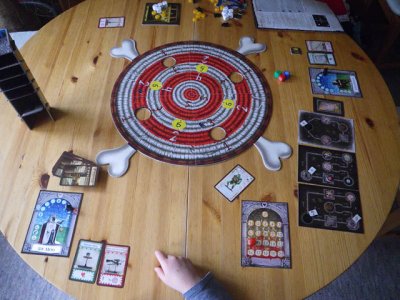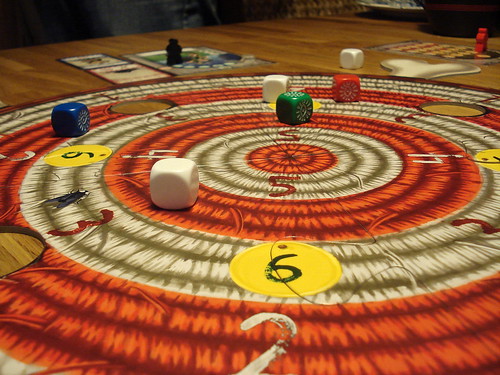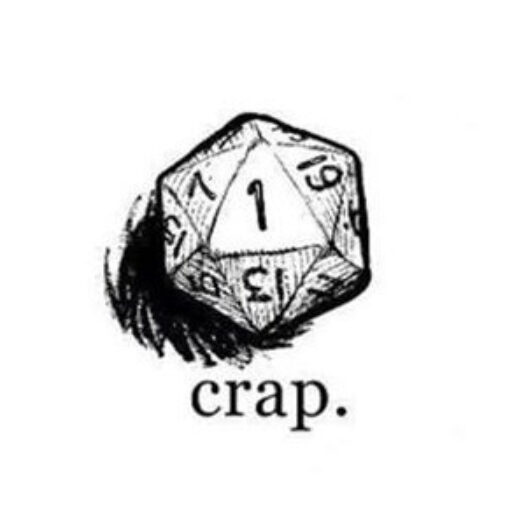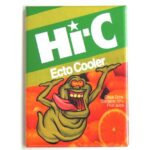

- You roll with your dominant hand.
- It has to hit (bounce on) the table before it goes on the target board.
- If it leaves the board, even hitting the table through four holes in the board, it is a Miss.
- If it never gets on the board, it is a Miss. If it lands on one of the bones, it is a Miss.
- If the roll doesn’t fulfill some special rolling condition that a Monster places on you, then it is a Miss.
 (Above) Assuming that none of those dice hit a hole on their way there: I can tell that this is the 6th roll of combat. Whoever rolled the green activated their special ability and scored 4 damage. Whoever rolled that white off the board took damage from the monster. Red and Blue both scored 2 damage, one white scored 4 and the other white scored 3 even though they probably argued that it was a 6. I reckon that means they are fighting a 4th level monster as most 1st level monsters only have 6 or so hit points. See, easy?
So that’s pretty much how the game works. At the end of the game, there is a scoring system. I suppose playing against previous scores is a thing you could do.
Traction: It has to be that assignment of coloured dice based on the special abilities of the party, and the rolling abilities of the party: and maybe it is discovering the rolling abilities of the players is what will make this game work. Discovering that I can’t roll Twist Shots while Overbo is a genius at Elbow Shots will inform those decisions we make about who does what in a fight and who uses which piece of equipment. There is no-one to beat but the game itself, and they seem to have done a good job of making that reasonably difficult.
Second Sidetrack, more of an emotional outburst: If you roll a die into the bullseye, it is worth 10 points. If you roll Eye-up on the Bullseye, it auto kills the opponent, even the Final Boss. This should make everyone who doesn’t know how to play darts happy: for some reason I get really upset when TV shows and movies want to show someone being good at darts and they have them hit the Bullseye. Goddamn it: that just means they are good at throwing darts. If they were good at playing Darts, they’d have put it in the Treble 20.
(Above) Assuming that none of those dice hit a hole on their way there: I can tell that this is the 6th roll of combat. Whoever rolled the green activated their special ability and scored 4 damage. Whoever rolled that white off the board took damage from the monster. Red and Blue both scored 2 damage, one white scored 4 and the other white scored 3 even though they probably argued that it was a 6. I reckon that means they are fighting a 4th level monster as most 1st level monsters only have 6 or so hit points. See, easy?
So that’s pretty much how the game works. At the end of the game, there is a scoring system. I suppose playing against previous scores is a thing you could do.
Traction: It has to be that assignment of coloured dice based on the special abilities of the party, and the rolling abilities of the party: and maybe it is discovering the rolling abilities of the players is what will make this game work. Discovering that I can’t roll Twist Shots while Overbo is a genius at Elbow Shots will inform those decisions we make about who does what in a fight and who uses which piece of equipment. There is no-one to beat but the game itself, and they seem to have done a good job of making that reasonably difficult.
Second Sidetrack, more of an emotional outburst: If you roll a die into the bullseye, it is worth 10 points. If you roll Eye-up on the Bullseye, it auto kills the opponent, even the Final Boss. This should make everyone who doesn’t know how to play darts happy: for some reason I get really upset when TV shows and movies want to show someone being good at darts and they have them hit the Bullseye. Goddamn it: that just means they are good at throwing darts. If they were good at playing Darts, they’d have put it in the Treble 20.





Thanks for the live test Rolland, Mike and JIM. Dungeon the Dragon may have defeated us, but we died as heroes.
That’s a good, stupid, fun game and i think most of us believed it was amateur-friendly. Right?
I think nose throwing would be more fun if I didn’t suck at rolling dice to begin with. I think both those games are wife friendly.
For sure. It seems kind of complicated at first, but I thought that melted away pretty quickly when you realize that you’re really just getting deeper and deeper into trick rolling dice onto a mat. The resource management part of it is a lot more straightforward than it appears at first (hit points? white dice? gold? special abilities? equipment? Oh, none of those really matter if I can just get it on the bull’s eye.)